Franck Cammas on the Volvo Ocean Race
Franck Cammas and his crew on the Groupama 4 VO70 did a fine job on leg four of the Volvo Ocean Race to arrive in Auckland in first place, the first French victory in the fully crewed round the world race since Lionel Pean and L’Esprit d’Equipe cleaned up in 1985-6.
On this last leg, Groupama edged into the lead on day seven as the fleet emerged into the Pacific on their unusual track east and Puma was banking her ‘buffalo girls’ flier to the north. The French team then doggedly hung on to their advantage, extending to 40 miles ahead within the next 24 hours and doubling this gain over the next 48 hours, the kind of behaviour we have become used to seeing when Cammas has been racing trimarans.
“We started the Volvo with a lot to discover and we made some mistakes for sure - after Alicante on the first leg,” admits Cammas. On that leg they chose to split from the fleet taking a route hugging the African coast as the other VO70s benefitted from staying offshore. Fortunately for them, three of their competitors broke and they were still able to claim third place into Cape Town.
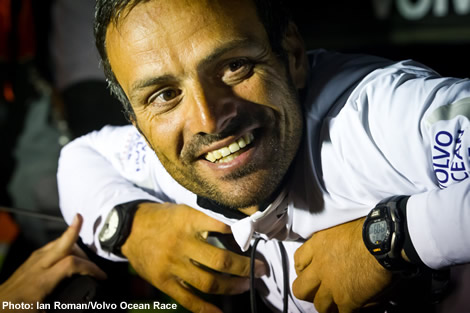
Groupama nearly pulled off a similar tactical manoeuvre on leg two when, as the fleet was unsuccessfully banging its head against a slow moving trough blocking their way east, the French VO70 charged off to the south, pulled into the lead which they subsequently lost when they were held up in the Doldrums.
“Now we are avoiding mistakes more and more and we are doing a better job sailing and I am happy with that," says Cammas. "The outcome for the last two legs – we have sailed not so bad, very well sometimes, compared to the others. For sure the crew is working better now than they were in Abu Dhabi or Cape Town and we can imagine doing the best in this Volvo Ocean Race. So I am happy to be in this position in the middle of the race. We have more than half the points still to score, so it is not finished... We better understand which are the good teams. But second is not a good place. We have to do better and we have a lot of work to do and we can’t lose too many points. For example inshore I think we have to improve more, so we have to work on that...”
In retrospect Cammas thinks that they should have played it safer earlier on in the race while they were getting a feel for the competition. “At the beginning we didn’t have confidence with our boat speed and we didn’t know the speed difference between the boats. Now sometimes we prefer to stay with the fleet, even if it is not the best option, because we are more confident with our speed and we know that even if we are in a bad option for everyone we can still finish well - so that is a big difference. But at the end maybe everybody will make a mistake or make a bad choice in navigation! We did in the first leg. Maybe Puma did it in the third leg [when they went east after Singapore] and Telefonica in the fourth leg [when they initially went south after passing Taiwan].”
Given that the Volvo Ocean Race is a fleet race, a game of both strategy and tactics, a perpetual exercise in balancing risk versus reward, this race has seen a number of bold moves. While Cammas lists the ones which didn’t work, some have - notably Puma’s buffalo girls move in this last leg, which hoisted them up to second place, in the position in which they ultimately finished into Auckland.
So is Cammas surprised that teams are being so bold? “I am a little bit surprised about that," he admits. "Everyone now likes to take risks which is good – it is interesting! The faster your boat, the more you can take this kind of route and you can go far away from the straight line. The difference in speed between upwind and 080°TWA is huge on this kind of boat so you can exploit that very well in terms of routing. It is very important to do a good course to gain sometimes 10° in TWA in the trades – it is a huge gain. It is normal to have this kind of strategy. For me it is more similar to what we do in multihulls.”
Victory on leg four for Groupama 4 was particularly welcome as on this predominantly upwind leg, among the six Volvo Ocean Race boats she is one of the most overtly geared up for fast reaching/downwind. As Cammas confirms: “Groupama 4 is better reaching and sailing downwind at high speed. The CoG of the boat, the position of the keel and the appendage shapes are more for these kinds of conditions compared with the others, for sure with Camper, but even compared with Puma and Telefonica. We have a hull shape more orientated to high speed, so it is different option compared to the two other Juan K boats.”
He adds that despite this they have improved their performance upwind. “We are managing the stacking differently and the weight on board and we have changed the shape of the sails to improve our performance upwind. But the normal set-up of the boat is more orientated to high speed, so I hope the next leg is more favoured for us. I am happy about that because the first three legs were too upwind all the time.”
So if you were putting money on the next leg, which will see the boats blasting across the Pacific segment of the Southern Ocean, then in boat set-up terms at least Groupama 4 should be a good bet to be first into Itajal, Brazil at the finish of leg, although Cammas thinks that this next leg could also see Abu Dhabi Ocean Racing finally come good. “I think they are very happy now to have a downwind leg! I think Abu Dhabi may be the fastest downwind in medium, VMG downwind conditions. So it may all change for the next leg.”
While the last three legs may have involved spending too much time on the wind, Cammas says he has still enoyed it. “It is always interesting in terms of racing to go upwind, it is exciting in terms of boat handling, etc. For the boat I think it is not good upwind, but in terms of racing there are more options, it is very open. I imagined the Volvo to feature more downwind and reaching weather than we have had until now, but it is not finished and the second part may be completely different.”
Coming into Auckland the French team experienced a holy heart failure moment when they discovered the bow of their boat to be full of water. According to Cammas the experts think that they suffered a collision. Fortunately this was further forward in their boat than the impact damage that caused Sanya to pull out early on in leg one. “It was a little bit smaller!” agrees Cammas. “And it was more forward, so there was a bulkhead and it was not a big issue, but the bulkhead broke so the water came inside a big area. On Sanya the problem was further aft so it was worse.” The impact and subsequent delamination occurred between Groupama 4’s crash box and her bowsprit bulkhead.
In retrospect the Groupama team was extremely lucky that the impact hadn’t occurred earlier in the leg, as now they could be still laminating their broken bow in some remote corner of Indonesia. Cammas says he is unhappy it happened at all, but fortunately the repair is now finished and the green VO70 is due to be relaunched tomorrow. “We have had to add some kilos in the bow which I am not happy about. Fortunately we were not in a close battle with the others so we finished without stress and pressure. But it was a bad point.”
Aside from this repair and going through the boat to make sure it is all ready for the Volvo Ocean Race’s big Southern Ocean leg, which starts on Sunday following an in-port race on Saturday, there is little time for the team to do much else.
However they are changing their sail inventory in anticipation of what finally could be a largely downwind leg in big breeze. Cammas says that to date the sails have held up well. “We don’t have a big issue there, no big cracks. We are happy with what we did with the structure of the sails. We didn’t take a lot of risk in the materials or fabric, so it is good for now.”
So is he missing the trimarans or is he now a VO70 convert? “I miss the trimarans a little bit for sure – to have a longer stopover it is better in trimarans! For a monohull the VO70 is very impressive, especially reaching it is a very good boat. It is a little bit uncomfortable, but it is very good and it is only 20-22 knots of boat speed. It is good for a monohull, but a multihull in the same conditions will do perhaps 33.”
And conditions on board are plain horrific in comparison. “30 knots on Groupama 3 you can sleep easily and there is no water – it is a holiday in comparison. But the bad point of the trimarans is the risk of capsize. I don’t think we can push a trimaran like a VO70, because of the level in this race and because of the boats - they are safer but if you took this crew on a trimaran it would be a big risk!”
While he’s been away, Cammas and the Groupama team have seen the Jules Verne Trophy record they set on Groupama 3 in 2010, beaten by the substantially larger Banque Populaire. With the giant blue trimaran for sale, it now appears that attempts on the Jules Verne Trophy have come to a close for the foreseeable future. However Cammas insists the non-stop round the world record could be bettered. “The time is not so high I think. I think we can do it a little better. They gained a lot in the first part until Tasmania. They were 2000 miles in front and at the end they were 1000 miles ahead. So I think you can gain more in the second part. We did the second part better than them with a bad forecast and a boat maybe a little bit slower. So I think they or we can do 45 days...”
So a nice little project after this Volvo Ocean Race and before the next? Cammas audibly shudders. “I have to sleep in between!”

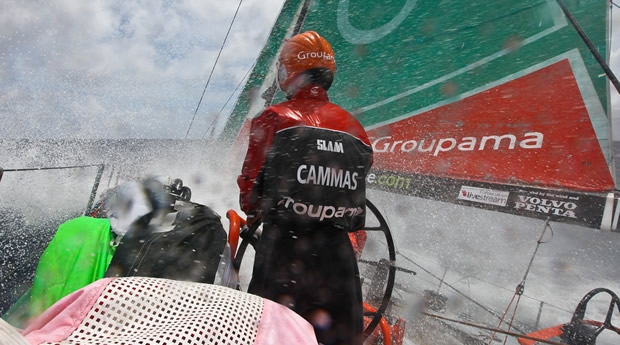
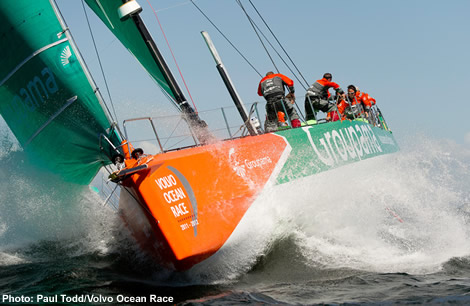
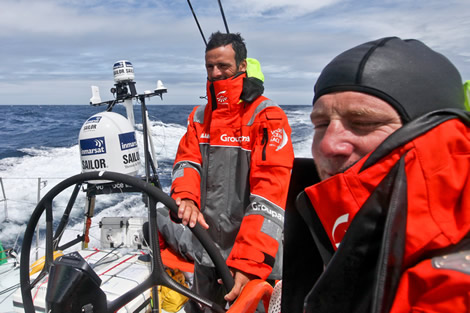
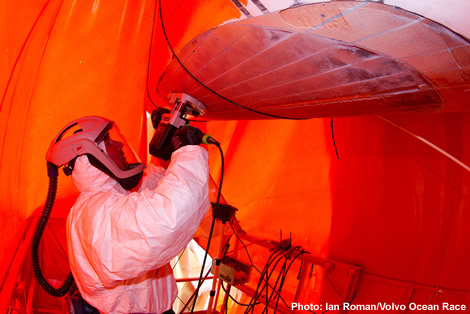
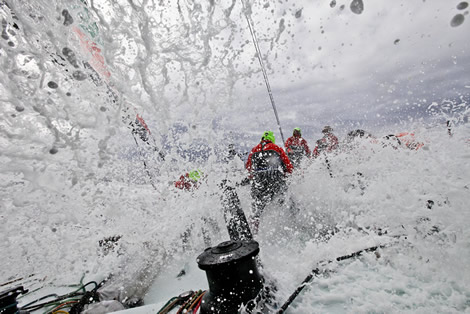









Latest Comments
Add a comment - Members log in